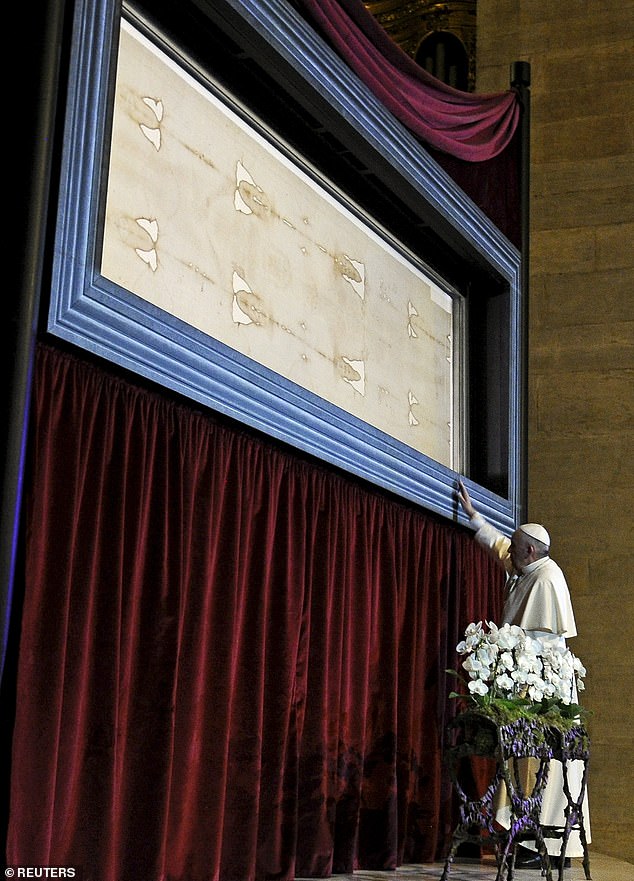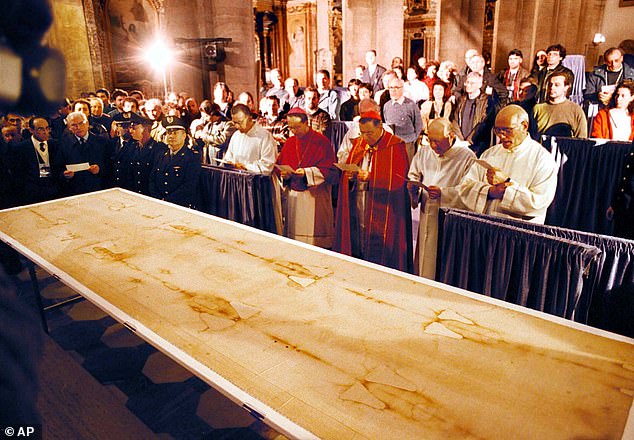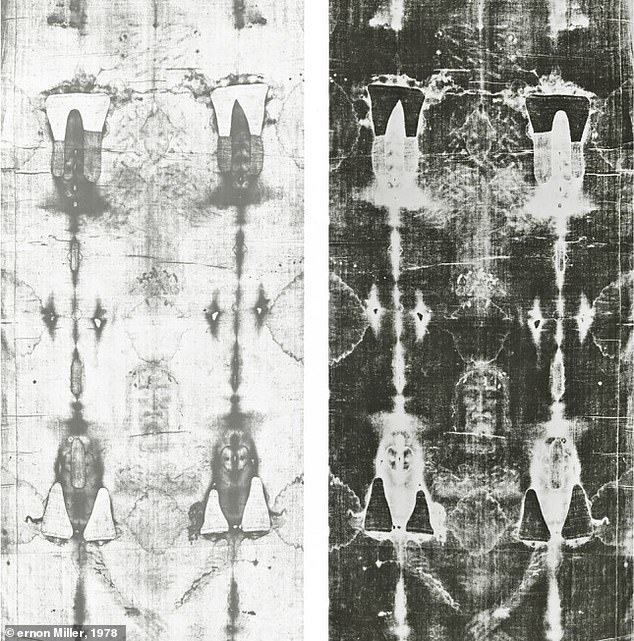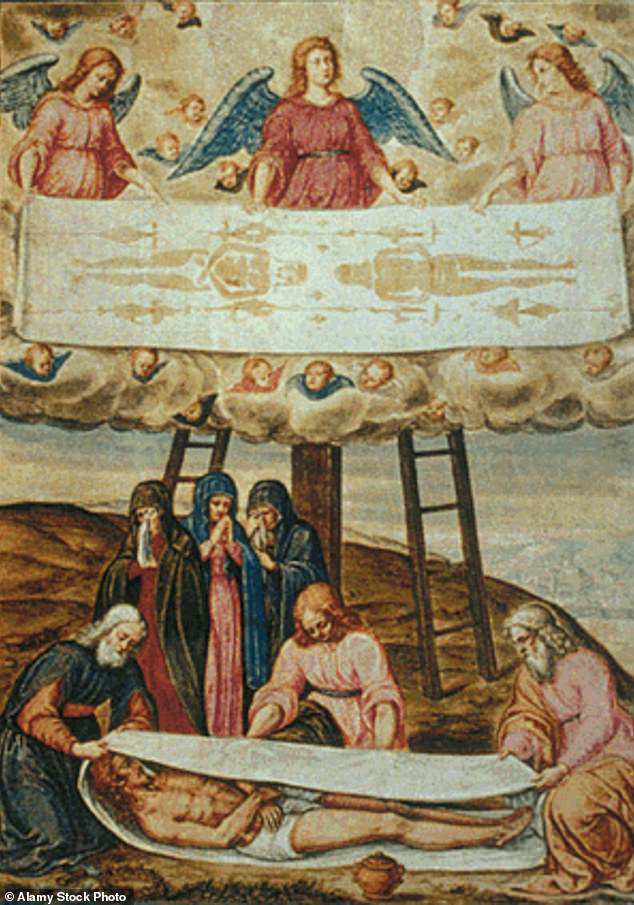Is this the real face of Jesus? AI unveils image based on the Turin Shroud – as scientists claim to have new evidence the cloth was used to wrap the body of Christ after his crucifixion
This week, scientists in Italy made headlines with claims that the famous Shroud of Turin dates back to the time of Jesus approximately 2,000 years ago.
Now, AI has created an image of what the Son of God might have really looked like, based on the cherished relic, which is said to bear an imprint of Jesus’ face.
MailOnline asked the AI tool Merlin: ‘Can you generate a realistic image of Jesus Christ based on the face on the Shroud of Turin?’
The AI results suggest that Christ was white, with large blue eyes, a short beard and thorns on his face.
Do you see the similarities with the famous sacred imprint?
MailOnline used AI to create a realistic image of Jesus Christ based on the imprint on the Shroud of Turin

The Shroud of Turin features an image of a man with sunken eyes, which has been analyzed by experts under different filters to study it (see image)
For some historians, the Shroud of Turin, kept in a chapel in the center of the Italian city, is one of the holiest relics of Christianity.
“The shroud is said to be the burial shroud in which the crucified Christ was wrapped when he was laid in the tomb,” said Tim Andersen, a researcher at the Georgia Institute of Technology who was not involved in the new study.
“There is no plausible scientific explanation for how it could have been forged or even created by natural processes.”
When the Shroud of Turin was first exhibited in the 1350s, it was touted as the actual shroud in which Christ’s mutilated body was wrapped after his crucifixion.
Also known as the Holy Shroud, it bears a faint image of the front and back of a bearded man. Many believers believe it represents the body of Jesus, miraculously imprinted into the cloth.
Research in the 1980s appeared to disprove the idea that the statue was genuine, after it was dated to the Middle Ages, hundreds of years after the death of Christ.
Italian academics have dated the material using a new X-ray technique and confirmed that it was made around the time of Jesus, some 2,000 years ago.
These astonishing findings support the idea that the faint, blood-stained trail of a man with his arms folded was left by the dead body of Jesus.

The Shroud first appeared in France in 1354. After initially denouncing it as a fake, the Catholic Church has now embraced it as genuine. In the photo, Pope Francis touches the Shroud of Turin during a visit in 2015

Many believe that the Shroud of Turin (pictured) is the cloth in which Jesus’ body was wrapped after his death. However, not all experts are convinced that it is genuine.
It appears that the fabric shows vague, brown images on the front and back. It concerns a thin man with deep-set eyes, who is approximately 1.70 to 1.80 meters tall.
The markings on the body also match the crucifixion wounds of Jesus mentioned in the Bible, such as thorns on the head, cuts on the back and bruises on the shoulders.
Historians have suggested that the cross he carried on his shoulders weighed about 300 pounds (136 kg), which must have caused bruising.
The Bible tells us that the Romans flogged Jesus, inflicting wounds on his back, and placed a crown of thorns on his head before the crucifixion.
The new research contradicts findings from the 1980s, which suggested the shroud did not date close to the time of Jesus.

Some argue that the bloodstains on the shroud (seen in this negative image) are clear evidence that the cloth was used to wrap a wounded person

The Bible says that Joseph of Arimathea wrapped Jesus’ body in a linen shroud and placed it in a new tomb
A team of international researchers analyzed a small piece of the shroud using carbon dating and determined that the cloth was made sometime between 1260 and 1390 – during the Middle Ages.
However, the authors of the new study argue that carbon dating would not be reliable because the fabric has been exposed to contaminants over the centuries that cannot be removed.
Moreover, as Andersen points out, there is no way to explain how it could have been forged using medieval technology.
“The authenticity cannot be determined, but it should be fairly easy to determine whether it is a medieval forgery,” Andersen said.
But despite decades of scientific research and peer-reviewed papers, that conclusion has never been proven.
“On the contrary, the evidence consistently points to the absence of any known forgery technique.”
